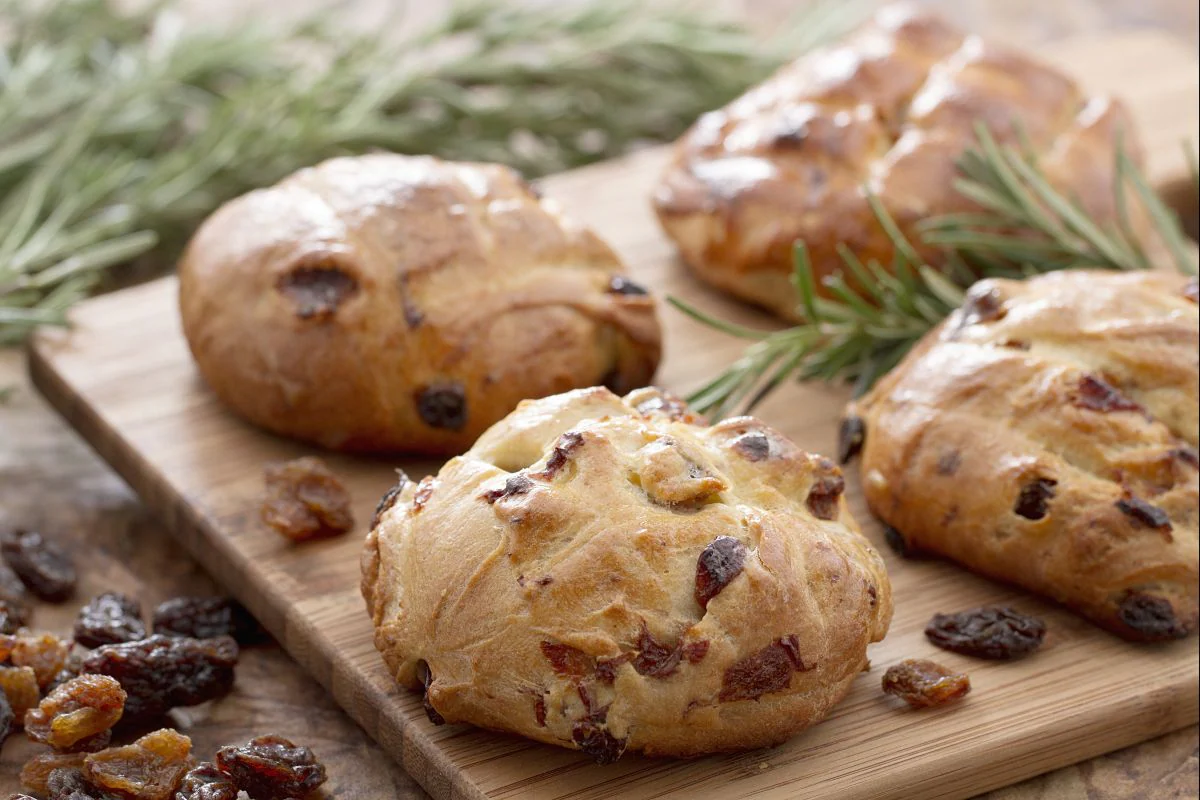Flatbread with Loquats and Rosemary
- Average
- 1 h 30 min
- Kcal 472

Pan di Ramerino is one of those foods that, I gotta say, takes you right to the heart of Tuscany. This Pan di Ramerino recipe has roots stretching back to the Middle Ages—seriously old school. Folks in Florence and nearby villages used to bake these tender little buns. Each one is packed with sweet raisins and a real punch of fresh rosemary, which is where the bread gets its name—‘ramerino’ is the Tuscan word for rosemary. Also, using good, local olive oil is a big deal here, too. The rich oil soaks into the dough and makes it extra moist inside, while the crust stays a bit thick. What you get is part Tuscan rosemary bread and part celebration treat. Usually, it pops up around Easter, but honestly, it's good any time of year. Really, any time. Every city in Tuscany seems to have its version, so you get these cool family secrets and different ways of making it. But, everyone agrees on this: you need real, fragrant rosemary and the plumpest raisins you can find.
Tradition sticks around for a reason, and this Italian Easter bread is proof of that. Some parts of Tuscany? They like to brush the tops with even more olive oil just before baking. So the buns come out super golden and a little crispy on top—still soft inside. There’s something comforting about tearing into one while it’s still a little warm, with the tangy scent of rosemary filling the room and the subtle sweet from the fruit. People might eat these with coffee in the morning or snack on them with a glass of wine in the afternoon. It’s the kind of food that makes you think of family kitchens and old wooden tables. You’ll hear stories about grandmothers passing down their own traditional Italian sweet bread techniques. Trying out different Pan di Ramerino ingredients is part of the fun. And here's the thing, no matter which city’s style you go with, you’re getting a bite of real, authentic Tuscan bread history every single time. Plus, sharing this bread with friends and family adds a touch of Tuscany to any gathering. Can't go wrong.
You might also like:

To prepare rosemary bread, start by soaking the raisins in cold water 1. Heat the extra virgin olive oil with rosemary needles in a pan for 15 minutes over low heat 2 (until the rosemary changes color). Using a strainer, filter the oil, remove the rosemary needles 3, and set aside.

In a bowl, place the Manitoba flour and plain flour 4, sugar 5, and salt 6.

Mix the dry ingredients with your hands 7, then dissolve the yeast in lukewarm water 8 and pour it into the bowl 9.

Add the rosemary-flavored oil to the dough as well 10 and start kneading to combine the ingredients 11. Add the drained and well-squeezed raisins 12, incorporate them into the dough and

transfer the mixture to a floured work surface 13. Continue kneading with your hands 14 until you obtain a smooth dough that will not be very soft but compact 15. Place the dough in a bowl and let it rise, covered with plastic wrap, in a draft-free place for about 2 hours.

The dough won't rise much but will still be well-puffed 16. Divide it into 12 rolls of about 2.8 oz each 17, shape them into balls 18 and

place them on a baking sheet lined with parchment paper to rise for another hour 19. After this time, brush the rolls with extra virgin olive oil and make cross-hatch cuts on the surface with a knife 20. Bake in a preheated static oven at 390°F for 20 minutes, then remove the rosemary bread from the oven, brush it with an egg yolk thinned with a couple of tablespoons of water 21, and put them back in the oven for the last 5 minutes of baking. Remove from the oven, let cool on a wire rack, and enjoy your rosemary bread!